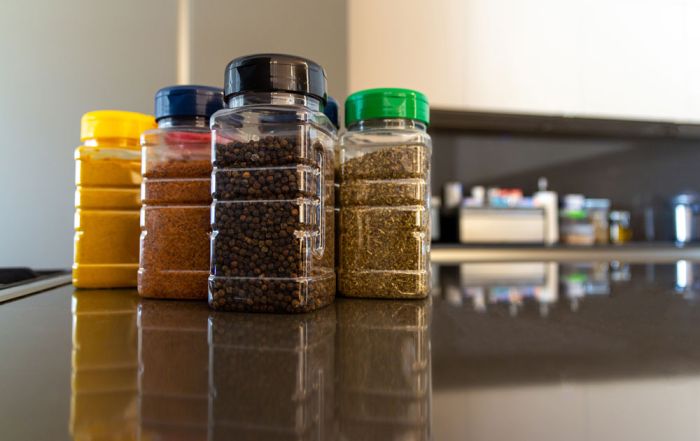Food Defense Plan Resources – at just the right price…
Earlier in the month, I discussed the importance of having a solid food defense plan in place for your foodservice operation. Even if the first version of your plan is not perfect, it is a start. Having plans down on paper will force you to think through the process and ensure the vulnerable points where opportunities exist for possible contamination within the operation are mitigated.
Often, getting started is the hardest part of developing your food defense plan. So, I thought I would compile some resources for you to utilize. There are many good resources available online. However, I often find many of the resources are focused on larger-scale food processing facilities and only a few resources focus on the retail foodservice operation. When I do come across a resource developed for retail foodservice operations, it seems they often forget about, or perhaps maybe do not fully understand, the nuances of running a smaller retail foodservice operation. With this in mind, I have developed a list of resources you might find useful, with a brief description of the resource.
- Guidance for Industry: Food Security Preventive Measures Guidance for Retail Food Stores and Food Service Establishments: This document was prepared by the FDA Center for Food Safety and Applied Nutrition and provides an excellent overview of food defense and recommended actions one should take in a retail foodservice operation. Included within the document is an in-depth self-assessment tool that you could use to review your current practices. Simply walking through the assessment in comparison to your current practices might be an eye-opening experience.
- Food Defense Toolkit (scroll all the way to the bottom of this page): This resource was compiled by the Health Department of Multnomah County, Oregon. Some of the resources include the county logo, but the information is still very good. Their toolkit includes a guide to establish your food defense plan, training handouts, posters, and reporting forms. All of this information was developed for retail food service operations and is easy to understand and use.
While these resources are not perfect and they certainly will not develop your food defense plan for you, they will give you the knowledge and tools necessary to get a good start on your plan.
- A Biosecurity Checklist for School Foodservice Programs: Developing a Biosecurity Management Plan: Yes, this publication is developed for schools, but before those of you who manage restaurants fly over this one, be sure to check it out. While school meal production and restaurant cook-to-order production is quite different, they have similar back-of-house processes and thus the steps to developing your food defense plans can be very similar. The checklist included in the resource is usable by all foodservice operations and can provide a good roadmap to program development and implementation.
- Food Defense Strategies for Food Service Operators: The New York State Department of Health has put this webpage together. While it was last updated in 2018 and it looks to be even a bit older than that, the information is still current. The page includes a Food Defense Strategies brochure and a Self-assessment Checklist that are easy to walk through and understand, even for someone who is just getting started with a food defense plan.
- FDA Food Defense Plan Builder: The Food Defense Plan Builder is a very powerful and, somewhat user friendly, computer application that you download to your desktop/laptop and will help you build your food defense plan. Before you jump into using it, please note that it was designed for full-scale food processing facilities and not retail foodservice operations, such as restaurants and schools. However, with some creative uses of the tools included within the program, you can make it work for a foodservice operation.
While these resources are not perfect and they certainly will not develop your food defense plan for you, they will give you the knowledge and tools necessary to get a good start on your plan. If you think I overlooked a resource that you have found useful, be sure to email it to me and I will update this blog or provide a list of resources in a future blog.
As we are gearing up for summer, please plan to attend the next SafeBites Webinar on July 21, 2021 at 1:00 pm. We have not yet finalized the topic, so if you have ideas, don’t hesitate to email me and let me know. I’d love to include your suggestions and/or answer the food safety questions you have. Likewise, feel free to reach out to any food safety questions you have, and we will research the answer and get back to you. Risk Nothing.
READ MORE POSTS
Cross Contamination and the Surfaces that go Unnoticed
In October, I ran across a new research study published in the Journal of Food Protection in early-September. The article explored cross contamination in consumer kitchens during meal preparation. One of the authors was a previous SafeBites presenter, Dr. Ellen Shumaker, at North Carolina State University. Although the setting was consumer kitchens and not the commercial kitchen many of you deal with daily, the findings were very applicable to what we often see in the foodservice setting.
Emergency Preparedness: The Not-so Calm After the Storm
If you and your foodservice operation have been hit by an emergency or other disaster, what comes next and how do you move forward? Much of the answer to this is predicated on the actual disaster that you are dealing with – a flood is certainly a much different than a fire, but some of the food safety considerations remain the same if your business has been left intact and has not been damaged by the disaster.
Emergency Preparedness and Responding to a Disaster with Food Safety in Mind
As I write the first blog this month, the realities of the devastation in Florida are coming to light as we also deal with the aftermath of Hurricane Fiona, which impacted Puerto Rico late in September. Recent news has been focused on the recovery efforts for all who have been impacted. Thus, I thought it would be fitting this month to discuss emergency disaster planning resources in our first blog and delve into recovering from a disaster in our second blog later this month.
During National Food Safety Education Month is it time for Your Food Safety Refresher?
You see them in every restaurant and commercial foodservice operation across the United States. Framed and proudly displayed, often by the kitchen, the cashier, the kitchen entrance, or the service counter - just as they should be. To what am I referring? The food safety certification certificates, of course!










